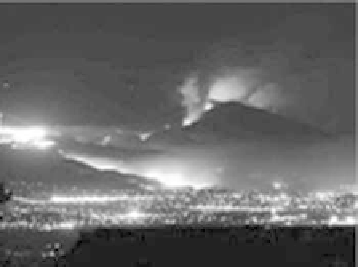Geoscience Reference
In-Depth Information
Tornado—Violently rotating columns of air that reach from a thunderstorm
and make contact with the ground.
Tornado Watch—Conditions are favorable for the formation of tornadoes.
No tornado has been sighted or detected at this point.
Tornado Warning—A tornado has been actually sighted or is being detected
on radar covering your area. Take shelter immediately in a safe and sturdy
structure.
Tornadoes often form without much notice. However, there are a couple of tools
that the Emergency Manager can use that could give an idea if there will be a
threat of thunderstorms that could produce tornadoes. The National Weather
Service provides a Hazardous Weather Outlook product that can provide informa-
tion on weather that may threaten the community. Another product that can be
used, which is issued by the Storm Prediction Center, is the Mesoscale Discussion.
This Discussion is typically issued when atmospheric conditions look like they may
produce severe weather. The Storm Prediction Center often issues their Mesoscale
Discussion anywhere from half an hour to several hours before issuing a weather
watch. As with any hazard, it is critical that the Emergency Manager take actions
to prepare their organization, as well as the public, well before a hazardous incident
occurs.
Wildfires
Description and History
Wildfires can be caused naturally (i.e., lightning) as well as by man (i.e., accidental
or arson). Wildfires are considered to be any uncontrolled fire in combustible veg-
etation that occurs in a forest, countryside, or other open wilderness area (Figure
5.5). Wildfires are often given other names such as grass fire, brush fire, bush fire,
forest fire, hill fire, muck fire, peat fire, and wildland fire (typically associated with
Figure 5.5
2003 Cedar Fire. (San Diego Fire-Rescue Department.)

